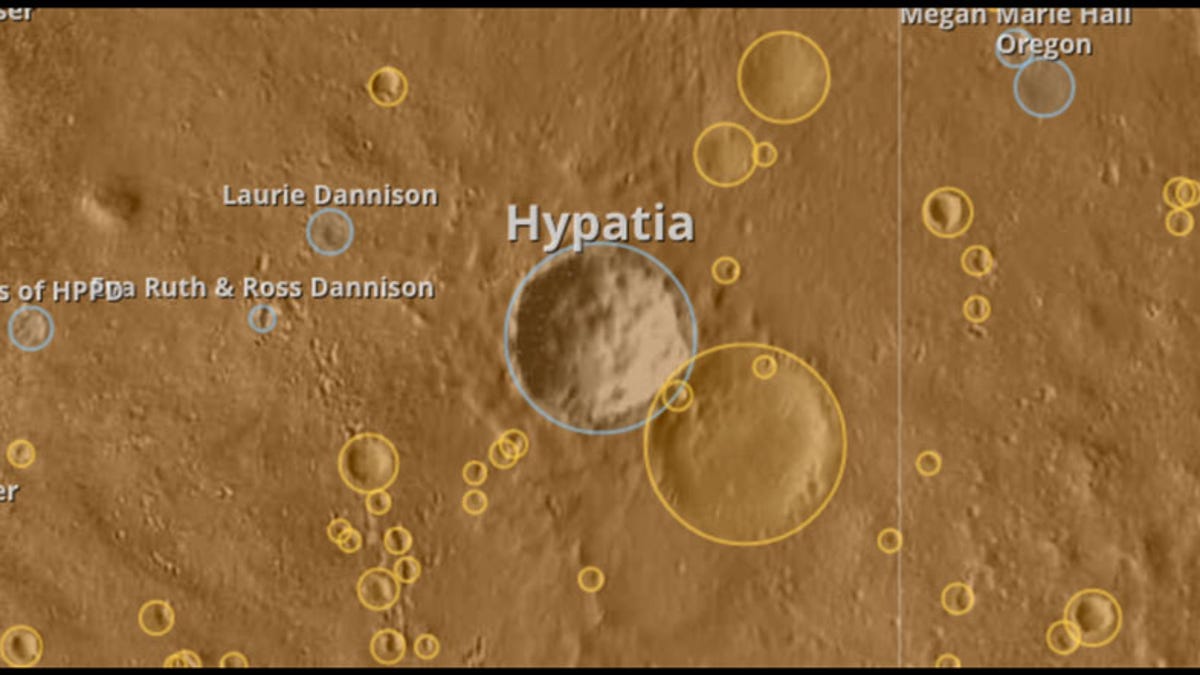Buy a name for yourself -- on a Martian crater
A project called Uwingu has begun selling naming rights to 500,000 craters on Mars to try to raise $10 million for science research and education.

You may not make it to Mars yourself, but perhaps your name will.
A space-education project called Uwingu announced Wednesday a project to raise $10 million in grants for space research and education by selling naming rights to half a milion craters on Mars.
How much does your shot at fame cost? Small craters are $5, but bigger ones are more expensive -- one crater I found that's 24 miles in diameter costs $500.
The project offers very wide latitude for names ("Sarah's large hole in the ground"), but you have to submit an explanation, and the name mustn't be offensive. There might be a bit of a land grab here, but just like with Elm Street, names can be used more than once as long as they're not too close.
The International Astronomical Union takes a dim view of the idea in general.
"The IAU is the internationally recognized authority for naming celestial bodies and surface features on them," the organization says on its Web site. "And names are not sold, but assigned according to internationally accepted rules."
But Alan Stern, NASA's former science program and mission director, said Uwingu is independent.
"We're making a new map," Stern told CNET. "This is a crowdsourcing project! We think that it'll gain recognition with time, but it's not meant to replace the IAU's map -- it's our map of Mars."
Uwingu is named after the Swahili word for sky.

